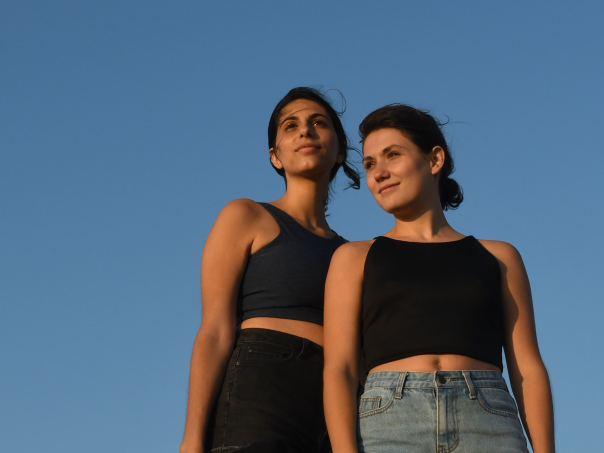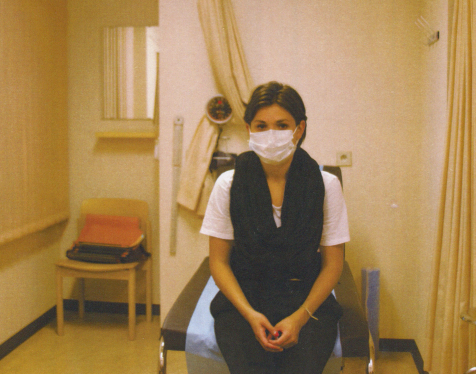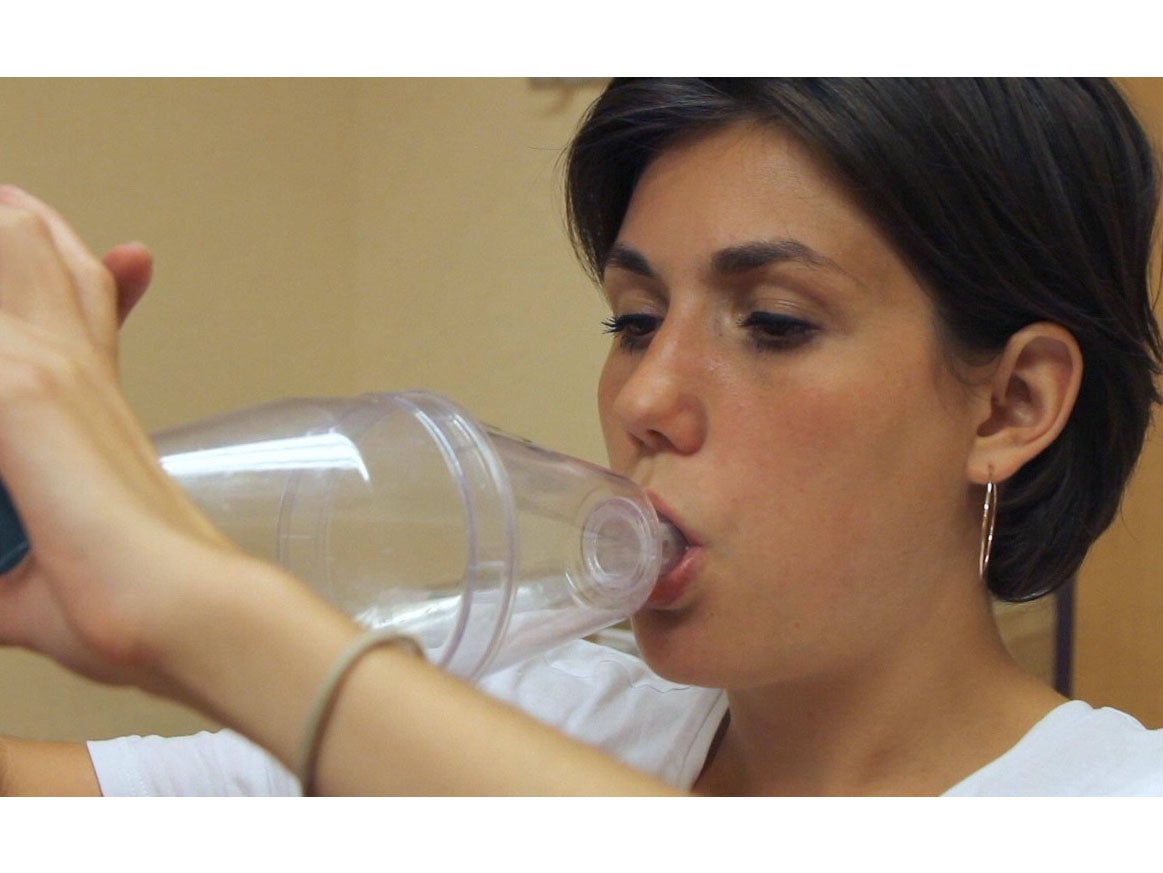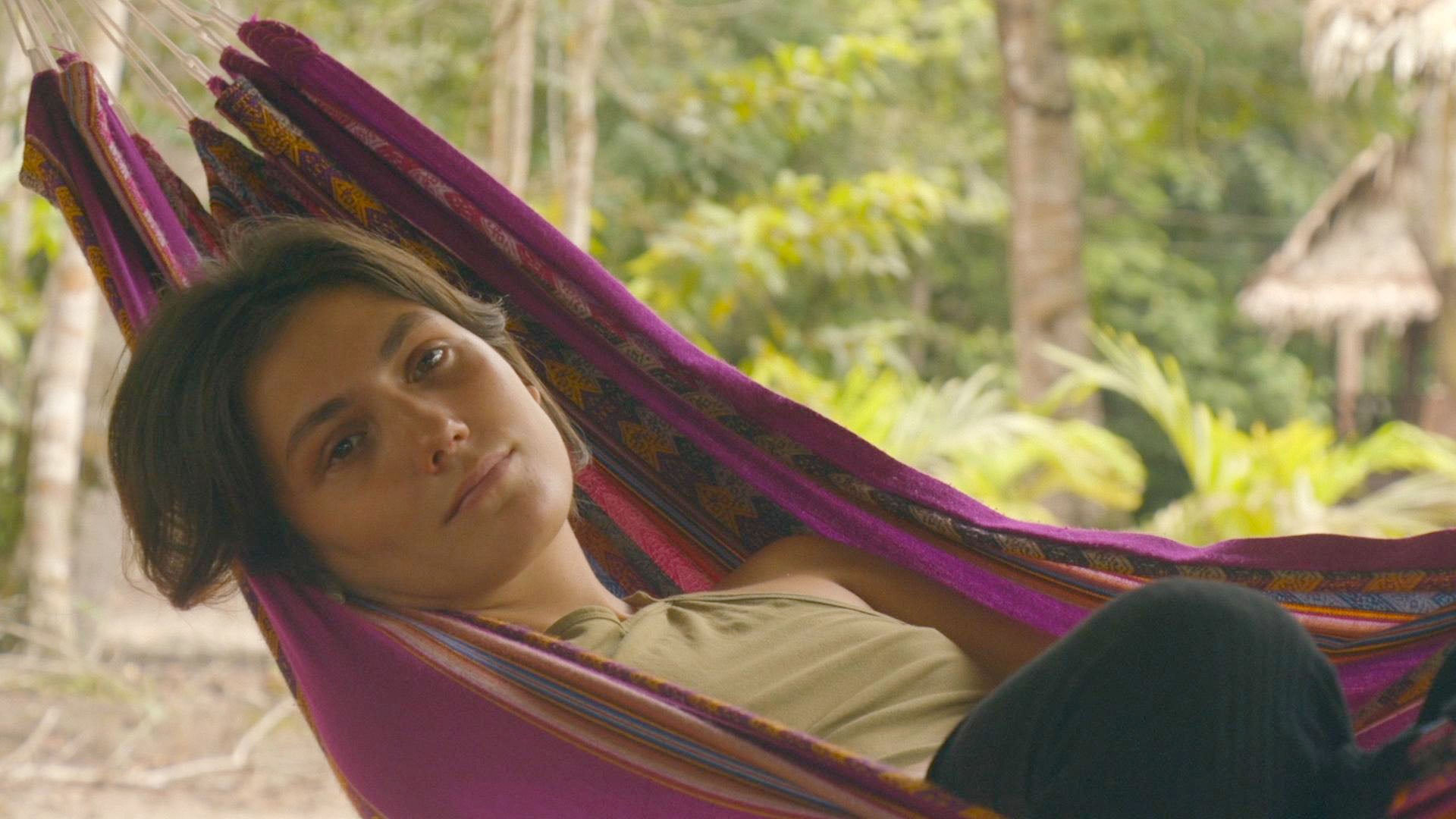How to heal your mind when your body won’t recover
Zoe Ettinger meets the women exploring alternative medicine for their chronic illnesses and finds the path to healing is often less about beating death and more about living life

Your support helps us to tell the story
From reproductive rights to climate change to Big Tech, The Independent is on the ground when the story is developing. Whether it's investigating the financials of Elon Musk's pro-Trump PAC or producing our latest documentary, 'The A Word', which shines a light on the American women fighting for reproductive rights, we know how important it is to parse out the facts from the messaging.
At such a critical moment in US history, we need reporters on the ground. Your donation allows us to keep sending journalists to speak to both sides of the story.
The Independent is trusted by Americans across the entire political spectrum. And unlike many other quality news outlets, we choose not to lock Americans out of our reporting and analysis with paywalls. We believe quality journalism should be available to everyone, paid for by those who can afford it.
Your support makes all the difference.An incurable disease, by its very nature, sounds like an issue that cannot be solved. But perhaps the solution is less about a cure, and more about the willingness to accept the disease, physically, mentally and spiritually.
Accepting disease, or any of life’s problems, is fraught with mistakes and backward steps. But Léa Moret, the subject of a new Netflix documentary about her chronic cystic fibrosis (CF), says it’s vital to “fuck up” along the way.
After graduating from the University of Southern California, Moret, 23, decided to embark on a journey to explore alternative healing methods in Central and South America, convincing her best friend, Camille Shooshani, 24, to accompany her. The film, Léa and I, documents their three-month journey, exploring medicines that could help treat Moret’s chronic illness.
CF is a genetic disorder that causes the body to produce too much mucus. It can build up in the lungs, digestive system and other organs, causing breathing problems and nutrient malabsorption in the gut. It also makes sufferers far more susceptible to infection. The condition worsens with age and, according to the NHS, only half of those with CF will live past the age of 40.
The rise of alternative medicine
Acupuncture: Practised for thousands of years in China, the technique has become increasingly popular around the world, with over 4 million sessions provided in the UK a year. Treatment involves sticking hair-thin needles in different pressure points on the body to alleviate physical pain, reduce nausea and boost mental wellbeing.
Reiki: A Japanese method for stress reduction and relaxation, derived from the words rei, ‘soul, spirit’, and ki, ‘vital energy’, from the late 1800s. The treatment involves laying hands on a patient and letting energy flow from the healer. It is used to treat conditions from cancer to depression. Millions of people in the US and abroad have tried reiki in the past year.
Ayurveda: A 5000-year-old Indian medicine system that is based on writings that reference a natural and holistic approach to healing. It includes natural medications made with plants, change in diet and exercise. It became popular in the Western world in the 1960s, with rising popularity through the 70s and 80s. However, discovery of toxic metals in imported medicines reduced its popularity in the mid-2000s.
Forty is an age associated with career security, having young children and, typically, still being physically fit. For most in this age bracket, death still looms far in the distance. For Moret and other chronic illness sufferers, death and life are intertwined.
Moret has spent much of her life in denial about her illness. As she was leaving home for the first time to attend university, age 17, she had started taking less and less medication. This was partly inspired by her first experience with alternative medicine.
When she was 16, she and her mother travelled to Mexico to visit a biomagnetist. The method of using magnets to heal the body dates back to the ancient Greeks. Magnets were – and by some still are – believed to “draw” illness out of the body. Despite no scientific research supporting their efficacy, Moret believed the magnets had healed her.
Five years later, as the film begins, Moret has again tested positive for pseudomonas, a common bacteria found in people with CF. Remembering her healing, Moret sought out another biomagnetist. The only one in California was in Upland, 30 minutes outside Los Angeles.
The film shows Moret and Shooshani arrive at a strip mall. The office they enter looks more like someone’s living room. Moret asks the biomagnetist if he knows what CF is. As he says yes, the camera cuts to him typing “cystic fibrosis” into Google Translate.

This scene, and countless more throughout the film, raise the question: how much can you trust someone to heal you, especially when there is no evidence to back up their claims?
Moret tells me that believing doesn’t mean being blind. Alternative therapies, as much as they seek to heal the body, require you to give yourself up completely to them. Though that may be easier said than done, for those with diseases that have no cure, they’re willing to put aside their ego for the sake of healing.
When she was just 11 years old, Corinne Olson, now 24, was diagnosed with juvenile arthritis. It was a long and bumpy road to diagnosis. Initially, doctors thought it could be Lyme disease, and prescribed a cocktail of medications that included an immunosuppressant, steroids and antibiotics. Olson lost a lot of weight very quickly and began noticing her hair falling out. She tells me: “When I returned to [the doctor] and recounted the medications she’d put me on, she was shocked and exclaimed that she’d ‘forgotten’ about which drugs I was taking at the same time, telling my mother and I that this combination was ‘very dangerous’.”
Her joints still swollen and in serious pain, the experience left her feeling helpless. Like Moret, it was only when she moved to Colorado to attend university that she became aware of and began to experiment with alternative medicines. “Cannabis had just become legal here for recreational and medicinal use and I’d heard the buzz about CBD, so I began taking it in oil form. I immediately noticed the difference in my pain levels, but the most miraculous aspect was the significant improvement in my swelling. For years, my knees had looked like water balloons half the time and now… they didn’t.” Finally, her disease was under control. The experience inspired her to study medicinal healing.

When I met Moret nearly two years ago, I had no idea she suffered from CF. As Shooshani says while filming her, “Léa isn’t most people. She doesn’t talk about cystic fibrosis. She refuses to take antibiotics. She almost never does her breathing treatments. Léa smokes.”
Indeed, the film shows Moret smoking a cigarette, and more than once. Though the sight is jarring, given what we know about her disease, the shots are carefully placed. They illustrate her humanity and what it means to not be perfect, and show the joy of momentarily forgetting what separates her from anyone else her age. As Moret says, “you don’t have to be hyper-serious about the disease all the time. It doesn’t invalidate what you’re saying, it makes it more grounded.” She’s definitely not trying to be the spokesperson for CF.
The film also seeks to ground the audience in their expectations of what the documentary is going to be about. The majority of the film shows Shooshani filming Moret. Yet it is called Léa and I, and it’s only at about 24 minutes in that we get to see who I is. The camera turns back on Shooshani and in this moment, we not only see her, but ourselves, as if we’ve joined them in Peru. Moret likes this moment, because though we might think it’s all about her and her CF, they’re inviting us to look at our own problems, and what we might need healing. From this point on, we’re more connected with them, and it comes at the perfect time.

The crux of the film lies in the ayahuasca ceremony. All her other attempts at medicinal healing (biomagnetism and a brief trial with peyote, a psychedelic cactus) have led up to this moment, for its mystery and reputation as a powerful hallucinogenic. Ayahuasca is a medicinal Amazonian tea brewed from a blend of two plants: the ayahuasca vine and leaves from a shrub called chacruna, which contains the psychoactive chemical DMT.
DMT is sold as an illegal recreational substance in the UK and other countries. Unfortunately, this draws “drug tourists” to the Amazon seeking a high, not healing.
You don’t have to be hyper-serious about the disease all the time. It doesn’t invalidate what you’re saying, it makes it more grounded
In fact, Moret and Shooshani left their first location for the ceremony for this exact reason. Pisac, which lies in the Sacred Valley, is known as the “alternative medicine capital of Peru”. The streets are lined with shaman shops and billboards for ayahuasca ceremonies, often run by foreigners rather than locals. Shooshani says “it feels like a way to get something without having to commit yourself to the tradition and respect it”.
Taking time to consider their participation in the market for ayahuasca, the women ultimately chose a ceremony run by an Amazonian shaman, where the profits went to his family and village. Additionally, Moret was going there to heal, to use the plant in the purest intention. In this way, they were following tradition.
At the start of the ayahuasca ceremony, the shaman, Ricardo Amaringo, described the nature of the plant, and how it heals. He told them that since the start of humankind, there have been only two afflictions that have plagued us: blocks and psychological traumas. To overcome these, one must look inwards: “When you take ayahuasca, you have to have in mind only one idea, the idea of your intention: I will see my body. I want to look at my body. I want to look at my stomach. I want to look at my trauma.”

One key difference between western doctors and alternative therapists is how they view the body. From what she’s learnt, Moret tells me that healers view the body as a “3D object” and “there’s no distinction between spiritual and physical illness, basically they are the same thing; it’s just that they manifest on three different planes, on an emotional level, a spiritual level and a physical level”.
Western medicine focuses on the corporeal and often discounts the psychological trauma of illness. Emily Goddard, 35, suffers from multiple sclerosis (MS); her diagnosis was sudden. “In November 2017, I woke up one morning and I couldn’t move the right side of my body. I went to the hospital and they thought I’d had a stroke – when you have paralysis that’s the first thing that people think. I was in hospital for a week having loads of tests done and they looked at the MRI of my brain and saw I had lots of damage which was historic, meaning it had to be something neurological.” She was diagnosed in January 2018, and for three months she was unable to move her right side. Her doctors told her she may regain movement, but it would depend on her type of MS, and they were unable to give her an exact prognosis.

Goddard regained full movement. When I spoke with her, like Moret, her condition had no obvious outward presentation. Though her hands quivered ever so slightly and once she forgot a word, these could be attributed to someone perfectly healthy.
Like Moret, Goddard has found it difficult to accept her condition. In fact, when she recovered from her paralysis, she carried on with her life as normally as possible, living in a state of denial that she even had the illness. Though she suffers problems every day because of MS, she says, “most of the time I don’t think I have an illness”.
Despite the physical ailments, she says “the hardest part for me has been coming to terms with it mentally”. To combat the mental struggle she faces, Goddard has decided to take psychedelic mushrooms this October. Extensive research has been done on the positive effects of mushrooms on mental health, and inspired her to try them. She feels that her diagnosis has made her feel like a more negative person, and that in a way, it’s stunted her personal growth. “In some ways it’s made me really bold in other ways it’s made me afraid of everything.”
All antidepressants do is numb you and I don’t want to be numbed. I don’t want to have any sensations taken away from me because MS takes that away from you anyway.
Though she’s never been a drug user, Goddard feels that mushrooms can offer something western medicine can’t. They allow you to connect more deeply with your body and mind. She feared that by going to a psychologist, they would prescribe her antidepressants. “All antidepressants do is numb you and I don’t want to be numbed. I don’t want to have any sensations taken away from me because MS takes that away from you anyway.” She’d rather be present and fully experience her mental health problems rather than try to stifle them. While western medicine focuses on taking away painful sensations, alternative therapies delve deeper into the discomfort, to solve it from within.
For those without chronic disease or pain, it can be easy to forget that they’re not perfect. Most of us assume our bodies are always going to do what we need them to. When this sometimes isn’t the case, it can change your view on things. Like shaman Amaringo says: “you must look at your body”.
At the end of Léa and I, we’re left wondering what happened with Moret’s disease. Did the ayahuasca heal her? Well, it depends on your definition of healing. By the end of the film, that will have likely changed.
Though she did not experience lasting physical changes, during the ceremony, Moret reacted to the medicine differently. “Everyone was throwing up, but I was actually coughing which was really weird because I never threw up in the six times I took it.” In one ceremony, she saw no visions, but her body shook uncontrollably. “I was just coughing, coughing, coughing more than any time I’ve done my breathing treatments. The plant was making me shake.” The breathing treatments for CF are vibrational therapy, which helps the body cough up mucus. Shooshani couldn’t believe that ayahuasca had done the same thing.
Her CF may be unchanged physically, but Moret’s mental state has shifted. Her biggest takeaway from the experience was “to accept whatever comes to you. For me the hardest one was accepting the illness. Because I couldn’t accept it I couldn’t accept a lot of other things.” Ayahuasca showed her how to accept it. She was able to see the life she was given as “her path” and that she was lucky to have received her life and all the struggles that come with it. She believes that it is through this acceptance that you can take on all problems in your life, physical or otherwise.

As much as the film is an exploration of healing, it is more an exploration of the self. Moret and Shooshani don’t seek to prescribe, and that’s important to note. Rather, they assert that healing is incredibly, deeply personal. Everyone’s path is different
They don’t want you to watch this film and take ayahuasca. Rather, they say, if you’re meant to take the plant, “it will call you”.
Olson, who studies medicinal plants, says plants can offer benefits that traditional medicine simply can’t: “Their phytochemical makeups are like complex symphonies of molecular interaction which work in synchronicity with each other and with the body’s chemistry. Western medicine has discovered the most ‘potent’ phytochemicals in these plants, isolated them, synthetically replicated and mass-produced them as pharmaceuticals distributed to the public. But honestly, it’s just the violin, just the melody, instead of a whole orchestra creating something that is biologically designed to work with and metabolise in the body. Life recognises life.”
‘Léa and I’ is available on Netflix and you can Léarn more about the film here
Join our commenting forum
Join thought-provoking conversations, follow other Independent readers and see their replies
Comments